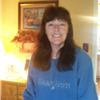Rounding numbers is a necessary math skill and a useful skill we use all through our lives. Rounding means changing a given number to the nearest tens, hundreds, thousands, and so on. This is a concept that is sometimes hard for younger students to grasp, but with practice they will be able to master the skill of rounding.
How to Round Whole Numbers
Step 1: Choose the place value that you want to round a number to-meaning 10's, 100's, 1000's or another place value.
Round 231 to the nearest ten-so in this case we are rounding to the ten's place.
Step 2: Decide what two multiples the number you are rounding is between.
We are rounding to the hundred's place in this example so we would choose multiples of 100. 7251 is between 7200 and 7300.
Step 3: Look to the digit in the place immediately right of the place you are rounding to and use the rounding rules to decide whether you move it up to the higher multiple or round to the lower multiple.
Look in the tens place of the number 7251. We see a 5, so we must round to the higher number. Rounding 7251 to the nearest hundred = 7300.
There are many fun ways to help children learn how to master the skill of rounding. Here is a rounding rhyme that I think would be helpful.
1 through 4 stay on the floor
5 through 9 climb the vine.
Another fun activity I found was, I draw a mountain.
In this activity the teacher draws a mountain on the white board and uses magnets on a cut out car to show the visual of rounding numbers. If the number ends in 1-4, you drive the car to that number, get out and look at the view and forget to put the car in park. You then discuss with the children what happens to the car if it's not in park. Of course it will roll back to the lower number. If the number ends in 6-9 you repeat the process with the car discussing whether it will roll forwards or backward when they are looking at the view. If the number is 5, it is determined the car will roll to the higher number. The teacher had a great idea because then she would give each of her students a piece of construction paper with a mountain and a small toy car so they could work at their own problems.Round 231 to the nearest ten-so in this case we are rounding to the ten's place.
Step 2: Decide what two multiples the number you are rounding is between.
We are rounding to the hundred's place in this example so we would choose multiples of 100. 7251 is between 7200 and 7300.
Step 3: Look to the digit in the place immediately right of the place you are rounding to and use the rounding rules to decide whether you move it up to the higher multiple or round to the lower multiple.
Look in the tens place of the number 7251. We see a 5, so we must round to the higher number. Rounding 7251 to the nearest hundred = 7300.
There are many fun ways to help children learn how to master the skill of rounding. Here is a rounding rhyme that I think would be helpful.
1 through 4 stay on the floor
5 through 9 climb the vine.
Another fun activity I found was, I draw a mountain.
There are many activities and fun ways children can learn about rounding numbers to keep reinforcing this skill. Here is a website that has an activity for children on a hundreds chart that I think would be helpful, also.
Hundreds Charts Activities


